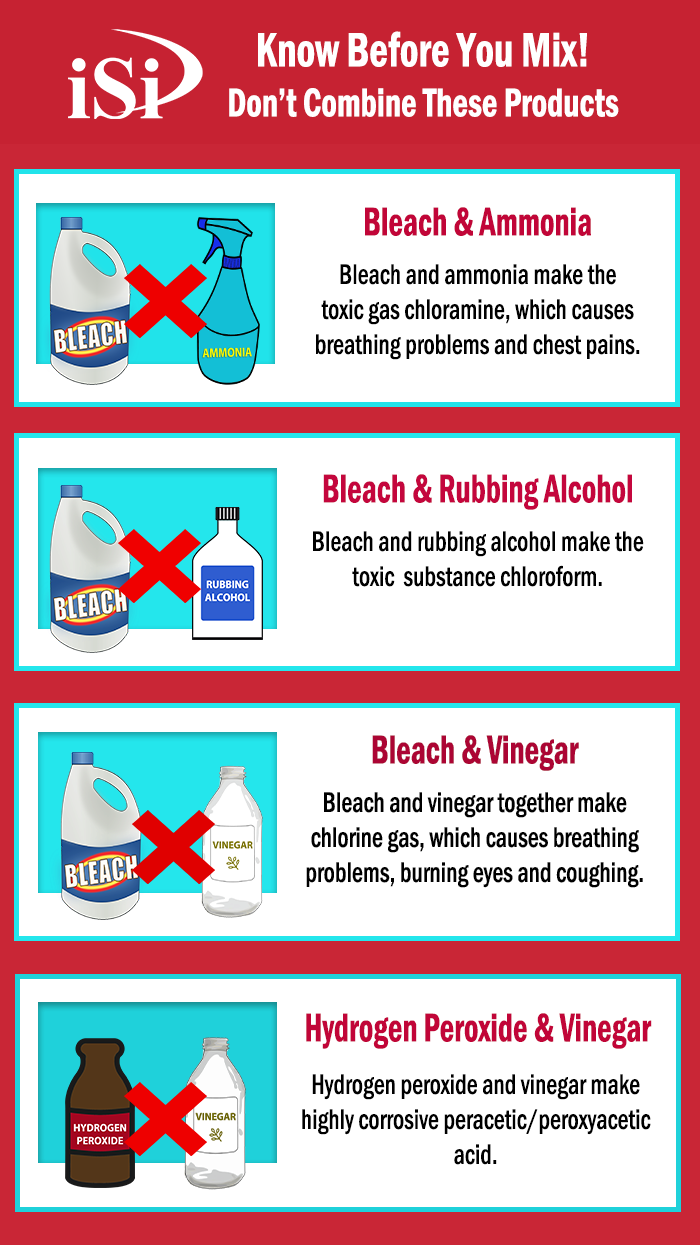With the spread of COVID-19, businesses and households are looking for ways to clean and sanitize surfaces, and bleach is one of those cleaners that experts have deemed acceptable. Before you begin, please review these bleach safety tips to ensure you and your workers are protected:
Uses for Bleach
Bleach can disinfect which means it is effective at killing most bacteria, fungus and viruses but the surface needs to be clean of dirt and grime beforehand. If needed clean the surface with soap and water before disinfecting.
Cleaning refers to the removal of dirt and impurities, including germs, from surfaces. Cleaning alone does not kill germs. But by removing the germs, it decreases their number and therefore any risk of spreading infection.
Disinfecting works by using chemicals to kill germs on surfaces. This process does not necessarily clean dirty surfaces or remove germs. But killing germs remaining on a surface after cleaning further reduces any risk of spreading infection.
The Centers for Disease Control & Prevention (CDC) recommends the following concentrations for disinfection of hard surfaces:
- 5 tablespoons (1/3rd cup) bleach per gallon of water
- 4 teaspoons bleach per quart of water
Remember to always add bleach to water and not water to bleach.
Personal Protective Equipment
Bleach is a corrosive, meaning it will burn skin, so it needs to be kept off skin and out of eyes. So always wear the following when mixing and using bleach.
- Nitrile gloves
- Safety glasses or chemical goggles
- Long sleeves
- Pants
- Covered shoes
Always wash your hands with soap and water after working with any chemical but especially before eating, drinking or smoking.
First Aid
- Eyes: Hold the eye open and rinse slowly and gently with water for 15 to 20 minutes, or for the time the manufacturer recommends. Remove contact lenses, if present, and continue rinsing the eye. Call a poison control center, emergency services, or a doctor.
- Skin: Remove the contaminated clothing. Rinse the skin immediately with plenty of water for 15 to 20 minutes, or for the time the manufacturer recommends.
- Inhaled/breathed in: Move the person to fresh air. If breathing is affected, call a poison control center, emergency services, or doctor.
- Swallowed: Call a poison control center, emergency services, or doctor. Do not try to get the person to vomit unless told to do so specifically by a medical professional. Do not give anything by mouth to an unconscious person.
When providing first aid or when helping another person, be careful not to come into contact with the bleach yourself. Use protective clothing when necessary.
Hazards of Mixing Bleach
Don’t mix bleach with ammonia, acids, or other cleaners. Mixing bleach with common cleaning products can cause serious injuries. Be sure to always read the product label before using a cleaning product.
iSi works with companies to help them with safety and industrial hygiene issues. Contact us if you have questions about industrial cleaning issues, using bleach or any other industrial disinfectant.



Contributing:
Keith Reissig
Industrial Hygienist | Project Manager
Keith brings over 20 years of industrial hygiene and safety experience to iSi and its clients. An industrial hygienist, Keith jokes that he "sucks air for a living." He specializes in workplace exposure testing and sampling strategies, safety compliance, ergonomics and training in a variety of topics in both the industrial hygiene and safety field.